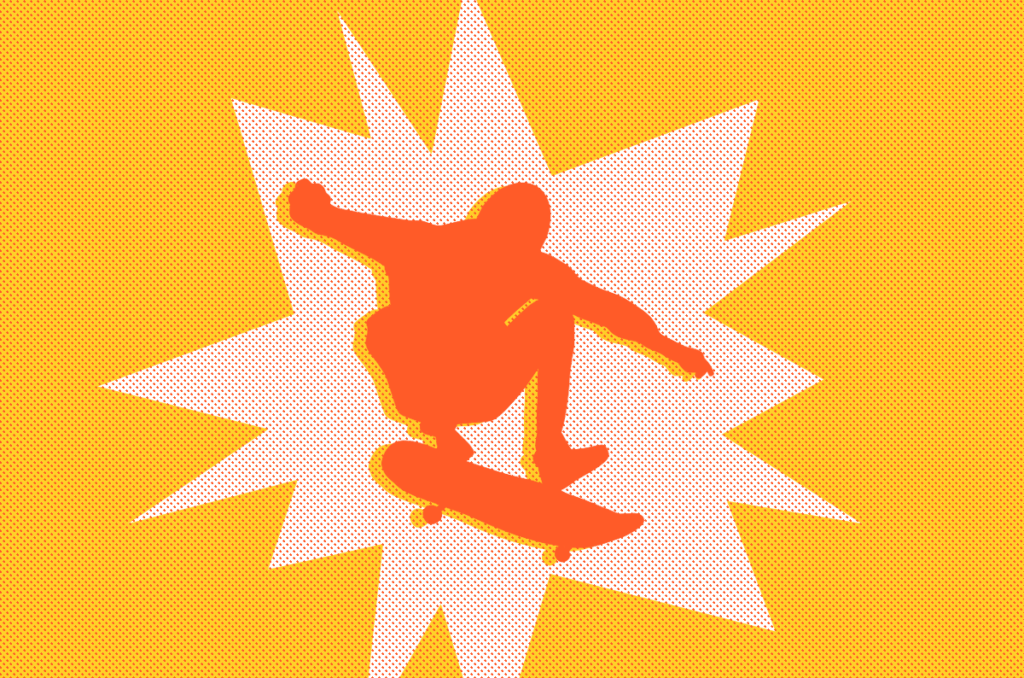My first exposure to Tony Hawk Pro Skater was about fifteen years ago on the big purple monstrosity known as the Game-Boy Advance. This handheld version of the game was kinda lame compared the versions on Playstation 2 and Gamecube, but being a stupid five year old, I assumed all Tony Hawk Pro Skater games sucked.
Because of my disappointment with the Gameboy Advance version, I was turned off from the series. By the time I rediscovered THPS a few years ago and realized that the console versions of the old games were actually supposed to be great, it was impossible for me to play them because I didn’t own the systems they were made for, and none of them had been re-released. When I heard the first two “Tony Hawk’s Pro Skater” (THPS) games were being remade by Vicarious Visions, I was optimistic. Even though there hadn’t been a well-received “THPS” game in well over a decade, developer Vicarious Visions’ near perfect remake of the original “Crash Bandicoot” games had me convinced that this “Tony Hawk” remake would be faithful to what made the originals great, and a fitting place to reintroduce myself to the series.
Not only is “Tony Hawk’s Pro Skater 1+2” faithful to the originals, but it polishes what made them great to a sheen. As a total package, the game makes a successful argument for “Tony Hawk’s Pro Skater’s” relevance in 2020, and acts as a reminder that great game design ages like fine wine.
After watching YouTubers pull off tricks and fly around the game without even trying, I expected to be effortlessly olympian right off the bat. But after a few tries at the first stage of tour mode, I realized I was fucking terrible at “Tony Hawk.” I couldn’t believe I was playing as the legendary Chad Muska and couldn’t pull off an ollie without landing on my face. Even though I was getting my shit kicked, the game’s controls felt intuitive enough for me to get used to with practice. Pulling off moves like kick-flips or grinding on rails takes pretty precise timing, and your character must land with their skateboard facing forward, or you’ll fall on your face and lose your combo, plus all of the potential points you could’ve earned by executing it correctly.
The payoff of this high-stakes design is the satisfaction of successfully chaining moves together and experimenting with different combinations of them. I found myself addicted to beating personal high scores, and I rarely experience this kind of motivation with sports games.
After about five hours of gameplay I was able to adapt to the game’s rules, and before I knew it, I was executing 360-benihanas on halfpipes and kick-flipping from rail to rail on a grinding frenzy.
This is where “THPS 1+2” clicked for me. It’s the type of game where you don’t come back to it to merely collect costumes for your character or gawk at the graphics (even though the remastered visuals look amazing), you come back to it to indulge in the game’s addictive skating mechanics.
There are endless combinations of tricks to chain together, and with each of the 19 stages included in the game oozing with personality and architectural secrets to explore, there’s something novel to skate, grind, or flip off at every turn. It’s consistently impressive how games that haven’t been altered at their core for twenty years can feel so timeless, and it’s a testament to the “Tony Hawk Pro Skater” series as a whole that this package is able to stand head-to-head with modern games.
After playing hours of “THPS 1+2,” I hope Vicarious Visions ends up making a remake of the third and fourth games as a similar package, or even their own original entry in the series. But until then, I’m more than content with the timeless and endless fun that “Tony Hawk Pro Skater 1+2” offers.



